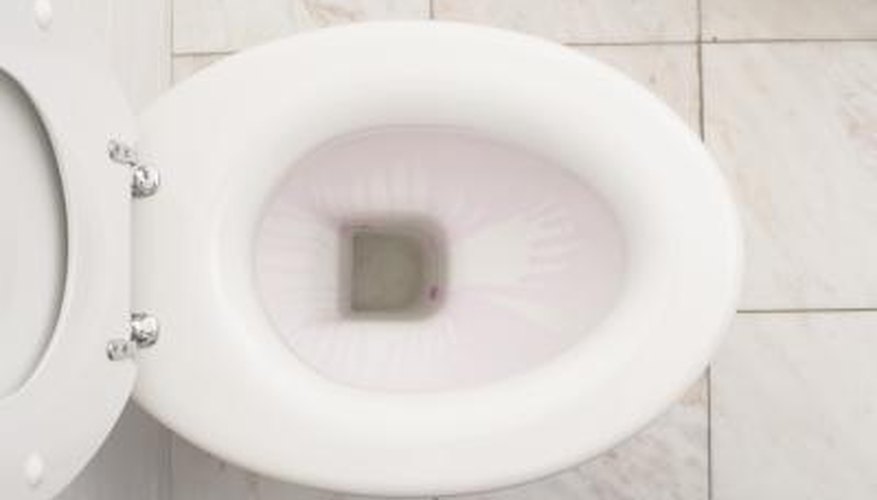A toilet should function correctly the vast majority of the time. When it does not, a chain reaction can create additional and more costly problems if the original problem is not addressed properly. A toilet bowl that fills up with too much water poses a risk not only to the bathroom but also to any rooms below the toilet and the house's structure itself.
Shutting off the water
Before you do any maintenance on the toilet, flush it and watch the water level rise inside the bowl. If the water gets within 5 cm (2 inches) of the bowl's rim, shut off the water by twisting the handle on the water valve clockwise until hand-tight. If you do not see a shut-off valve behind or to the side of the toilet, you will need to close the house's main water valve.
Clog in drain
A clog in the toilet's drain will cause the bowl to overfill with water since the water that normally would exit the bowl is partly or completely obstructed. Some toilets will not overflow when there is a clog, but others will spill over when there is only a partial clog in the drain. Once you have shut the water off, you are prepared to address the clog itself. If you see the object clogging the toilet from the drain opening, reach in and pull it out. Funnel-cup plungers, which have an extra rounded piece on the bottom of the cup, are designed to free clogs that sit in the upper part of a toilet's drain. An auger or toilet snake will feed through the toilet drain's curves, reaching the clog to break it free and restore the toilet's flushing ability.
- A clog in the toilet's drain will cause the bowl to overfill with water since the water that normally would exit the bowl is partly or completely obstructed.
- Funnel-cup plungers, which have an extra rounded piece on the bottom of the cup, are designed to free clogs that sit in the upper part of a toilet's drain.
Tank water level
The water level in the toilet's tank may be to blame for the excess of water in the bowl, especially if there is no clog in the toilet's drain or if the problem occurs regularly. Adjusting the water level down in the toilet's tank will lead to less water going into the bowl. With tanks that use a floating ball, bend the arm that attaches to the ball downward. Some tanks using a float that slides up and down on a bar, which you can adjust by either pinching a clip or twisting a plastic screw on the top of the float. You may have to test out different water levels so the toilet's bowl does not overfill but the toilet can still flush debris down effectively.
- The water level in the toilet's tank may be to blame for the excess of water in the bowl, especially if there is no clog in the toilet's drain or if the problem occurs regularly.
- You may have to test out different water levels so the toilet's bowl does not overfill but the toilet can still flush debris down effectively.
Water damage concerns
When the toilet's bowl fills up with too much water, one of the primary concerns is that the water will spill out over the bowl's rim and onto the floor. When water exits the bowl, clean it up as quickly as possible. Leaving the water can lead to water damage on the bathroom floor but even more critically to the subfloor or the room below. Leaking water will ruin ceiling lights in the room just below the toilet and can also lead to mould growth in the subfloor, weakening floor joists.
- When the toilet's bowl fills up with too much water, one of the primary concerns is that the water will spill out over the bowl's rim and onto the floor.
- Leaving the water can lead to water damage on the bathroom floor but even more critically to the subfloor or the room below.
